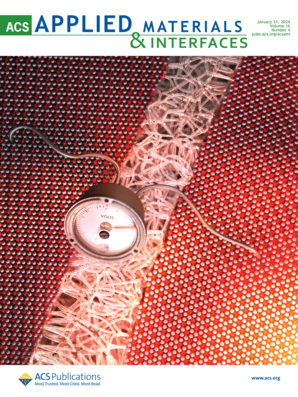Multiomics Reveals Nonphagocytosable Microplastics Induce Colon Inflammatory Injury via Bile Acid-Gut Microbiota Interactions and Barrier Dysfunction.
IF 8.3
2区 材料科学
Q1 MATERIALS SCIENCE, MULTIDISCIPLINARY
引用次数: 0
Abstract
Microplastics (MPs), as emerging global environmental pollutants, exhibit intestinal toxicity mechanisms that are closely associated with the particle size. Nonphagocytosable MPs (NPMs), though incapable of being internalized by intestinal epithelial cells, still provoke colonic inflammatory damage. However, the exact mechanisms remain elusive. This study established a BALB/c mouse model subjected to long-term oral exposure to 10 μm polystyrene MPs (PS MPs) to comprehensively explore how NPMs induce colonic inflammation and injury. The results demonstrate that prolonged PS MPs exposure disrupts the colonic redox balance, leading to oxidative stress. Simultaneously, it disturbs intestinal immune homeostasis by elevating the Th17/Treg cell ratio and upregulating pro-inflammatory cytokines. Additionally, PS MPs notably compromise intestinal mechanical barrier function, diminishing mucin secretion and downregulating tight junction protein expression. Multiomics analysis further uncovered that PS MPs induce bile acid (BA) metabolic dysregulation by interfering with liver function and gut microbiota, causing a marked accumulation of total bile acids in the colon, especially conjugated BAs. Both in vitro and in vivo experiments confirmed that specific concentrations of taurochenodeoxycholic acid (TCDCA) activate the reactive oxygen species-mitochondrial pathway, triggering apoptosis in colonic epithelial cells and exacerbating PS MPs-induced colonic inflammatory injury. This study provides the first evidence of a cross-organ regulatory mechanism in which NPMs mediate intestinal toxicity via the "liver-BA-gut axis," offering novel theoretical insights for assessing the intestinal toxicity of MPs.多组学揭示不可吞噬微塑料通过胆汁酸-肠道菌群相互作用和屏障功能障碍诱导结肠炎症损伤。
微塑料作为新兴的全球性环境污染物,其肠道毒性机制与颗粒大小密切相关。非吞噬性MPs (npm)虽然不能被肠上皮细胞内化,但仍会引起结肠炎症损伤。然而,确切的机制仍然难以捉摸。本研究建立长期口服暴露于10 μm聚苯乙烯MPs (PS MPs)的BALB/c小鼠模型,全面探讨npm诱导结肠炎症和损伤的机制。结果表明,长时间暴露于PS - MPs会破坏结肠氧化还原平衡,导致氧化应激。同时,它通过提高Th17/Treg细胞比例和上调促炎细胞因子来扰乱肠道免疫稳态。此外,PS MPs显著损害肠道机械屏障功能,减少粘蛋白分泌和下调紧密连接蛋白表达。多组学分析进一步发现,PS MPs通过干扰肝功能和肠道微生物群诱导胆汁酸(BA)代谢失调,导致总胆汁酸在结肠中显著积累,尤其是共轭胆汁酸。体外和体内实验均证实,特定浓度的TCDCA可激活活性氧-线粒体通路,引发结肠上皮细胞凋亡,加重PS - mps诱导的结肠炎性损伤。本研究首次提供了npm通过“肝- ba -肠轴”介导肠道毒性的跨器官调节机制的证据,为评估MPs的肠道毒性提供了新的理论见解。
本文章由计算机程序翻译,如有差异,请以英文原文为准。
求助全文
约1分钟内获得全文
求助全文
来源期刊

ACS Applied Materials & Interfaces
工程技术-材料科学:综合
CiteScore
16.00
自引率
6.30%
发文量
4978
审稿时长
1.8 months
期刊介绍:
ACS Applied Materials & Interfaces is a leading interdisciplinary journal that brings together chemists, engineers, physicists, and biologists to explore the development and utilization of newly-discovered materials and interfacial processes for specific applications. Our journal has experienced remarkable growth since its establishment in 2009, both in terms of the number of articles published and the impact of the research showcased. We are proud to foster a truly global community, with the majority of published articles originating from outside the United States, reflecting the rapid growth of applied research worldwide.
 求助内容:
求助内容: 应助结果提醒方式:
应助结果提醒方式:


